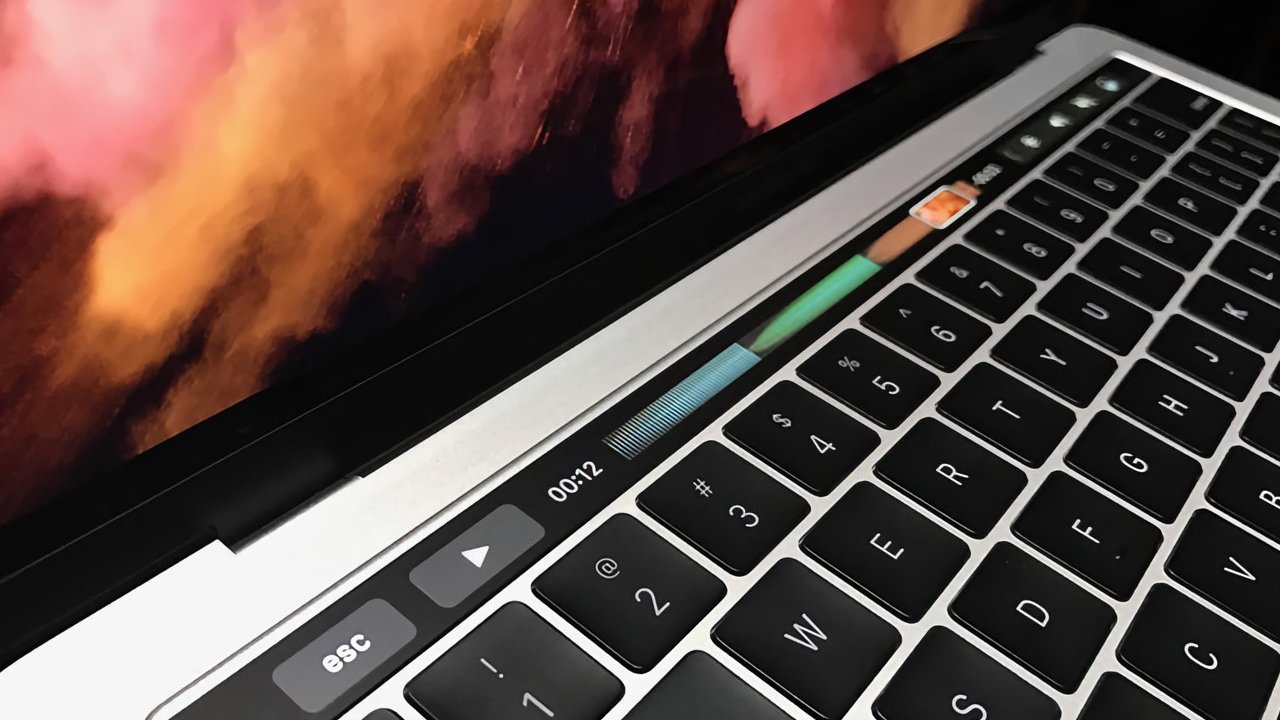Touch screens on the MacBook Pro haven't arrived yet, but Apple is working on inventing a force-sensitive display for the line -- and maybe a revamped Touch Bar, too.

The Touch Bar could come back as force-sensitive -- and the main display could add that, too
The Touch Bar was well enough done but not Apple's greatest success, and appears to have faded into history. Then Apple has always resisted making touch-sensitive screens for the MacBook Pro.
But it's been looking into it. Not only has Apple been researching touch-sensitive screens, it's been exploring force-sensitive ones -- that could also be used in a Touch Bar.
A newly-revealed patent application called "Computing Device Enclosure Enclosing A Display And Force Sensors," covers both.
As ever in patents, little is mentioned without a qualification mentioning every possible variation or application of the idea, for the benefit of future lawyers. In this case, Apple blurs the line a lot between what users would recognize as a Touch Bar, and what they'd see as the main display.
Apple calls the monitor on a MacBook Pro, the "primary display," and describes a possible "secondary display" near a "primary input mechanism, such as a keyboard, trackpad, or the like."
Based on the illustrations in the patent application, that "secondary display" could go anywhere near the keyboard, but Apple shows it most as a horizontal line just above the top row of keys.
"The secondary display may function as an additional or ancillary input mechanism and may, in some embodiments, extend a functionality of the primary input mechanism," says the patent application. "The secondary display may further change one or more elements, icons, graphics, or the like shown on the display as a context of the user's interaction changes in order to provide content-sensitive inputs to the user."
"For example, as the user changes focus to, or otherwise selects or initiates, a program, application, or the like," it continues, "the secondary display may change one or more user-selectable graphics, buttons, icons, soft keys, and so on to ones that are specific to the program, application, or other context."
Call it a secondary display all you like, that's a Touch Bar. But it's not the same Touch Bar Apple introduced and then removed.
Instead, it's a Touch Bar that is force-sensitive. Rather than just recognizing taps and swipes as the old one did, this proposed Touch Bar would detect pressure.
So where before you might have a Touch Bar button that switches on Adobe Illustrator's pen tool, now you could have it alter the brush stroke depending on how hard you press.
Detail from the patent showing region 130, which is clearly a Touch Bar, plus 150, which is the whole main display
The original Touch Bar did not have this capability, but that doesn't mean Apple didn't try. It would be possible that this patent application refers to an earlier idea for what would then become the familiar Touch Bar.
Except for this. "[At] least the secondary display is force-sensitive," says the patent application in one of its examples. And "the primary display may be touch- and/or force-sensitive in certain embodiments."
So it's true that Apple has considered making a MacBook Pro with a touchscreen. But it's also gone further, at least in its research, and explored force-touch too.
It's not the case that Apple would then go from being years behind other manufacturers, to leapfrogging them with a better touch screen. There are PC laptops that include force-sensitive screens.
There aren't many, though. So this could turn out to be another case of Apple coming late to a party, but then showing its rivals how it should be done.
